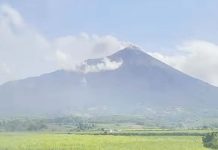
[av_one_full first min_height=” vertical_alignment=” space=” custom_margin=” margin=’0px’ padding=’0px’ border=” border_color=” radius=’0px’ background_color=” src=” background_position=’top left’ background_repeat=’no-repeat’ animation=”]
[av_heading heading=’Region 6 conservation park undergoes rehab’ tag=’h3′ style=’blockquote modern-quote’ size=” subheading_active=’subheading_below’ subheading_size=’15’ padding=’10’ color=” custom_font=” av-medium-font-size-title=” av-small-font-size-title=” av-mini-font-size-title=” av-medium-font-size=” av-small-font-size=” av-mini-font-size=” admin_preview_bg=”][/av_heading]
[av_textblock size=” font_color=” color=” av-medium-font-size=” av-small-font-size=” av-mini-font-size=” admin_preview_bg=”]
January 18, 2018
[/av_textblock]
[av_textblock size=” font_color=” color=” av-medium-font-size=” av-small-font-size=” av-mini-font-size=” admin_preview_bg=”]
ILOILO City – The first conservation park in Western Visayas located in the town of Lambunao, Iloilo is undergoing rehabilitation.
The Mari-it Conservation Park inside the West Visayas State University – College of Agriculture and Forestry campus in Barangay Jayobo, Lambunao operates as a rescue and captive breeding center for species on the brink of extinction.
Two years ago, the park encountered a problem when an international donor helping in its maintenance died, said Lambunao’s tourism officer Jennifer Osorio.
With the recent entry of donors, the park has again begun to pick up.
Lambunao’s local government unit has been an active partner in maintaining the park, which was established in 1993. Its contribution for the park’s development increased from P600,000 in 2017 to P1 million this year.
The 1,000 square-meter conservation park is inside the 1,000- hectare Mariit Agri-Eco Tourism Park which boasts of two waterfalls – the Matillano and Inas Falls – and fruit-bearing trees.
The conservation park hosts the Visayan Warty Pig, Visayan Spotted Dear, Visayan Writhed Hornbill (Dulongan), and Visayan Tarictic Hornbill (Tirik), among others.
The writhed hornbill, considered as critically endangered, hatched three eggs in 2005 after more than 20 years of dormancy.
“They were first in the world to breed in captivity. It was bred successfully,” said Osorio.
The hornbills were rescued from the mountainous areas of barangays Cabatangan and Jayobo.
Osorio said that aside from those that were rescued, there could still be a lot more hornbills in the wild, especially in the virgin forests of these two barangays.
They are currently being quarantined because it’s their breeding season.
Osorio said the ongoing restoration program needed sponsors. Also, needing rehabilitation is the road leading to the Inas Falls. (PNA)
[/av_textblock]
[/av_one_full]





